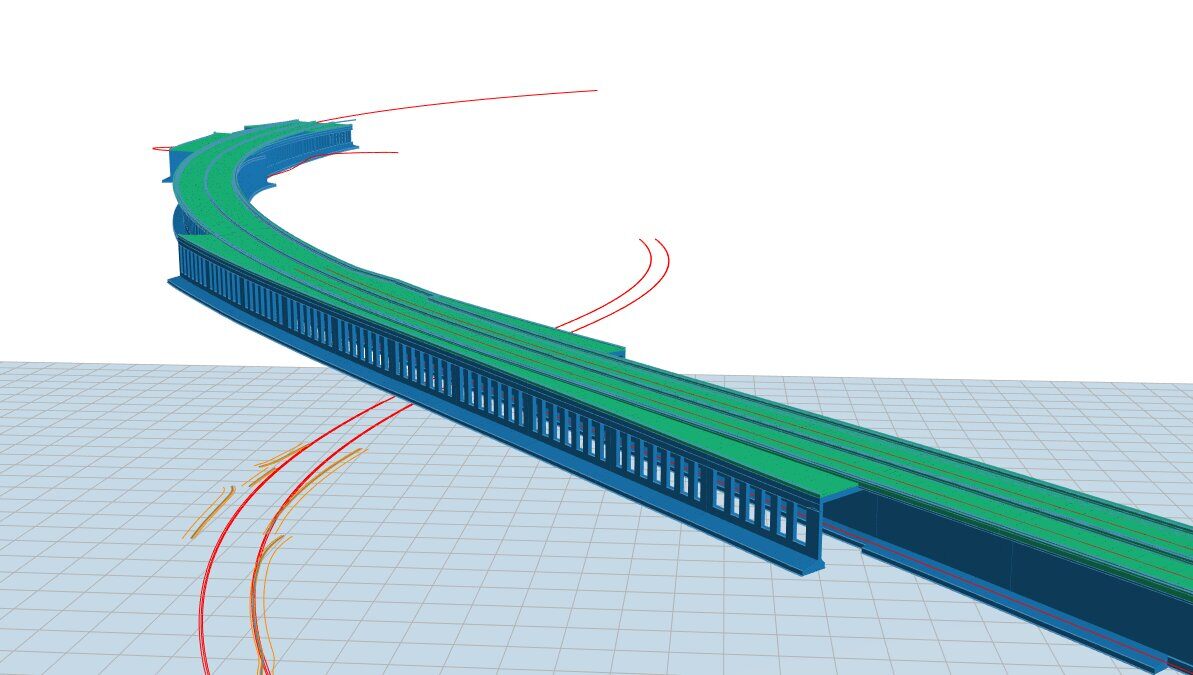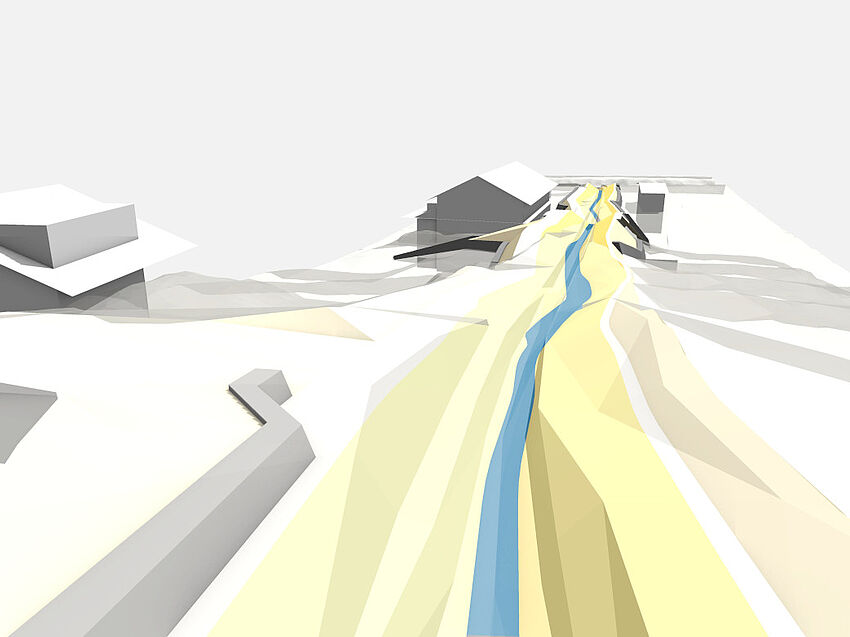Better Precast Girder Bridge Design with ALLPLAN: A Complete Workflow Solution
Rarely has Greece seen a road infrastructure project as complex as the Thessaloniki Eastern Ring Road Upgrade Project. Referred to as the Thessaloniki Flyover, or simply just the Flyover, this ambitious civil engineering endeavor aims to transform the transportation network of Greece’s second-largest city. The €463-million Public-Private Partnership (PPP) project involves the upgrade of a 12-kilometer highway, including a 4-kilometer flyover bridge with a 7.6-kilometer elevated section, designed to significantly improve traffic flow and reduce congestion in one of Greece’s busiest urban areas. The Flyover promises not only to alleviate the city’s traffic issues but also to save lives by reducing the accident rates on the Eastern Ring Road, which are currently 12 times higher than those on the Attiki Odos in Athens.
Key components of the project, which will be constructed and operated by the Avax-Mytilineos consortium, include nine interchanges, eight new bridges, and three tunnels. The standout feature of this urban infrastructure project is the sprawling flyover that will be the largest in Greece, serving over 20,000 vehicles per hour once completed.
MAVRAKIS Consulting Engineers, a leading firm in the Greek engineering sector, was tasked with the design of this complex project. To meet the stringent demands of the Thessaloniki Flyover project, they turned to ALLPLAN Civil design software, which played a crucial role in optimizing the design and construction processes.
Delivering a Local Landmark
The project is not without its challenges. The complexity of designing and constructing such an extensive elevated expressway in a densely populated urban area presents significant technical hurdles. Many structures within the project required innovative solutions to manage their unique design and construction demands. These challenges included ensuring structural integrity under varying traffic loads, integrating seismic safety features, and maintaining precision in the alignment of curved bridges.
Streamlining Complex Structural Designs
For example, the T8 structure is a key structure in the project, estimated to carry 25-35% of the road traffic. As a cut-and-cover segment of the highway, it presented significant design challenges due to its complexity. With a length of 800 meters, the structure required careful planning to accommodate three lanes in each direction at two different levels, along with the integration of over 800 piles supporting 33 separate segments. The primary challenge was to ensure the structural integrity and safety of this multi-layered design while adhering to tight project deadlines.

ALLPLAN Civil enabled the design team to tackle this challenge efficiently by providing advanced parametric modeling capabilities. The software’s flexibility allowed for the seamless creation of multiple cross-sections with a variety of variables and geometries, ensuring that all design specifications were met. Additionally, the team used Visual Scripting to retrieve the pile coodinates from an Excel file, then placed Python Parts of the piles at the corresponding locations. This significantly reduced the time required for repetitive tasks and enhanced the overall project efficiency. The integration of Bimplus further streamlined the process by allowing for the import of multiple axes, which aided in the accurate design of the structure’s walls.
Enhancing Design Precision with Smart Functions
Nearby, the T8A structure, a 114-meter-long segment of the highway, required the design of two sub-bridges, 15 piers, and 46 girders. The challenge was to maintain a high level of precision in the design, especially considering the need to accommodate various road alignments and terrain interactions.

ALLPLAN Civil provided the tools necessary to address this challenge through its template function, which allowed for the easy and consistent design of girders. The software’s ability to apply a single template change across all members of the same type ensured design uniformity and reduced the likelihood of errors. Additionally, the software’s terrain import function was instrumental in identifying potential collisions between the piers and the surrounding terrain.
Managing Complexity and Seismic Requirements
One of the most technically demanding segments of the project was the design of T9 structure , a 4-kilometer bridge. This twin beam bridge needed to accommodate seismic isolators while maintaining structural integrity and ensuring that the road and bridge axes were aligned despite their differing paths.

The advanced features of ALLPLAN Civil, particularly the variation tables and special functions, were crucial in overcoming these challenges. The bridge design software allowed for the precise alignment of the road and bridge axes, ensuring the design met all required specifications. Furthermore, ALLPLAN Civil’s ability to import smart symbols for seismic isolators directly from ALLPLAN facilitated the integration of these critical components, ensuring that the bridge met seismic safety standards. The height of the seismic isolator consoles, which were located on the piers, was easily checked and adjusted thanks to the seamless interaction between the software’s various functions.

Building a Future-ready Thessaloniki
The Thessaloniki Flyover Project demonstrates how innovative engineering and advanced tools like ALLPLAN Civil can overcome complex infrastructure challenges. Through precise design, efficient workflows, and seamless integration of various elements, MAVRAKIS is successfully addressing the technical demands of the project. Yet perhaps more importantly, they’re delivering a project that the city’s residents are already looking forward to – and what could be more satisfying than designing a project that is appreciated by its users?




